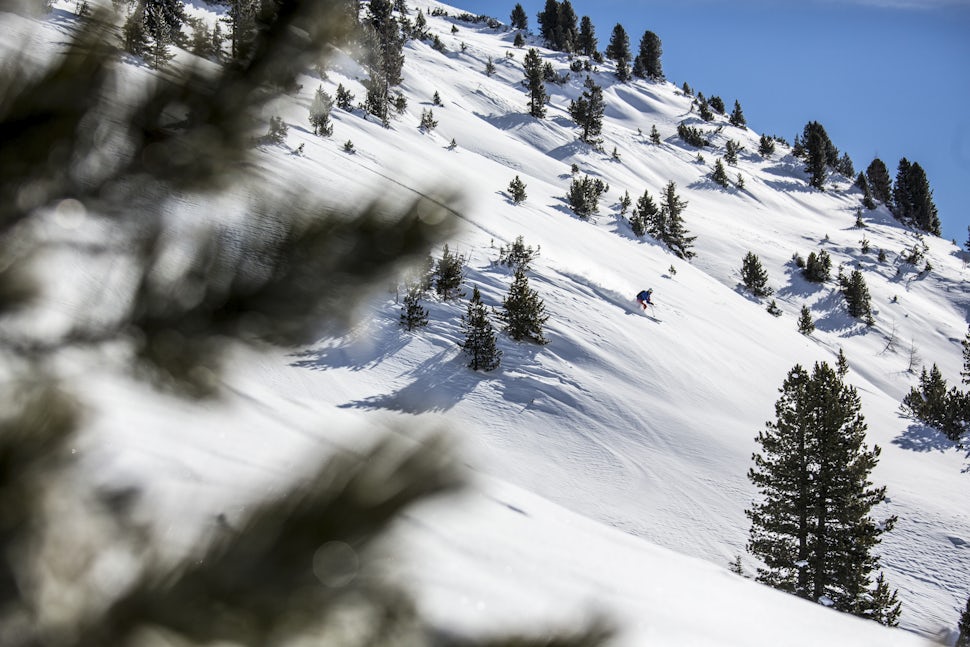5 Things to Think about before Buying New Ski Boots
To ensure the proper fit of a ski boot, you should always visit a trusted bootfitter. I have written this guide to help arm you with the knowledge to determine if they have your best interests in mind or are simply trying to make a sale.

1. The Ski Sock
Almost daily, I have a customer pull a pair of thick cotton socks from their pocket as they sit down for a fitting. Instead of wicking it away, cotton will absorb moisture from your foot, and as we all know, wet feet are cold feet. Thicker socks result in more compression and less blood flow. Less blood flow equates to colder feet. I find that tech ski socks, such as the SmartWool PHD Ski, have extra padding above the instep which is a popular problem area in terms of foot compression. Keep it simple with something similar to the Wigwam Snow Whisper Pro, as when it comes to ski socks, less is more. Fewer seams. Less material. Cheaper cost. Happy feet.
Tips:
- When travelling to the mountain, don't wear the sock you intend on skiing in.
- Always wear a clean (and dry) pair.
- Ensure there is no bunching within your ski boot.
2. Measuring the Foot
Ski boots are measured in two ways. Boot sole length (BSL) is the sole measurement of the boot and is primarily used for determining a correct DIN setting and binding adjustment. The second way in which a ski boot is measured, and the one we will focus on, is mondopoint. Never base your ski boot on shoe size as there are many variables on both sides of the spectrum which will leave you with an ill-fitting boot.
The first step in determining a correct size is to look at the foot from a 2D perspective. The length and width (Note: We measure the "width" of the foot to match the "last" of the boot).
Measure both feet in inches and convert the length to centimeter and width to millimetres.
1 inch = 2.54 centimeters / 1 inch = 25.4 millimetres.
When it comes to having two different foot lengths, go with the smaller foot as it is easy to create volume and nearly impossible to remove it.
3. The Truth About Half Sizes
Simply put, they don't exist. "But the stickers!" The only difference between a 26 and 26.5 ski boot is the thickness of the footbed and is so small that it's nearly impossible to distinguish one from the other. BOTH the shells and liners are exactly the same and many manufacturers only ship half sizes to retailers.
If you are in a size 26 ski boot and it is small on your foot, go up to a 27 as a 26.5 will place you in the exact same boot. If your foot measures out to a true 26.5, size down to a 26 as the boot will pack out and it is much easier to create space in a boot (we will go over this later) than to remove volume.
4. The Last "Width" of a Ski Boot
When you hear the term last, it is in reference to the inside width of a ski boot shell measured in millimeters. It is important to understand that it is the measured last of the average boot length (size 26 mondo). As the length increases or decreases from 26, the last also adjusts proportionately. While it varies slightly between manufacturers, the rule of thumb is that it increases or decreases by 2-3mm. So if the box on a size 27 boot references a 100 last, the actual last of the boot is roughly 102 or 103.
5. Determining Your Instep
While high arches tend to pair with large insteps and low arches to low insteps, we do our best to remove any assumptions from the boot fitting process. Determining your instep is a straightforward process that only requires a simple tape measure. Measure from each side of where your heel meets the ground while pulling the tape snugly over your navicular bone.
We want to acknowledge and thank the past, present, and future generations of all Native Nations and Indigenous Peoples whose ancestral lands we travel, explore, and play on. Always practice Leave No Trace ethics on your adventures and follow local regulations. Please explore responsibly!
Do you love the outdoors?
Yep, us too. That's why we send you the best local adventures, stories, and expert advice, right to your inbox.







